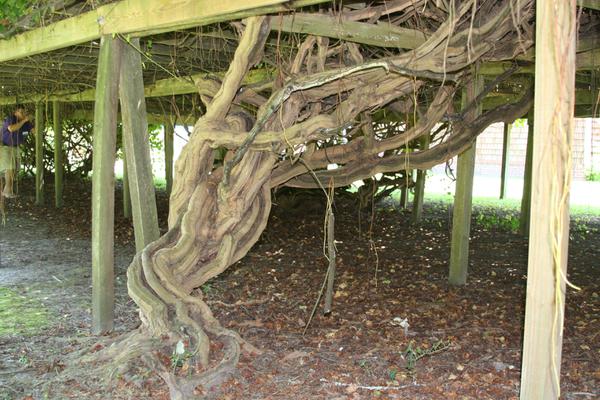The Muscadine Heritage
The muscadine grape is known as America’s first grape. In 1584, one of the first things that the first explorers sent to the New World by Sir Walter Raleigh observed on Roanoke Island was that the land was overflowing with grapes. What the explorers saw was probably the agricultural work of the local Croatoans. These grapes undoubtedly provided sustenance for the early settlers of the Lost Colony.
 Roanoke Island is home to the oldest known grapevine in the United States. This four-hundred-year-old scuppernong “Mother Vine” has a trunk two feet thick and once stretched across half an acre. Learn more about the Mother Vine here. See a WUNC-TV video about the Mother Vine here.
Roanoke Island is home to the oldest known grapevine in the United States. This four-hundred-year-old scuppernong “Mother Vine” has a trunk two feet thick and once stretched across half an acre. Learn more about the Mother Vine here. See a WUNC-TV video about the Mother Vine here.
Both dark and light (bronze) muscadines are found in the wild. The first recognized muscadine cultivar was a bronze selection, found before 1760 in Tyrrell County, NC. First known as the ‘Big White Grape’, it was later named ‘Scuppernong’ after the area in which it was found. The name scuppernong became commonly used for all bronze muscadines, regardless of actual variety name. Bullis and its variants (bullace, bullet grape, bull grape) are very old names for dark-fruited muscadines. Nearly 100 years of breeding work has resulted in the release of many improved cultivars.
In the early 1800s, North Carolina was a national leader in wine production and in 1840 was the nation’s top wine producer, with an industry built entirely on muscadine grapes.
